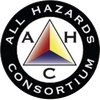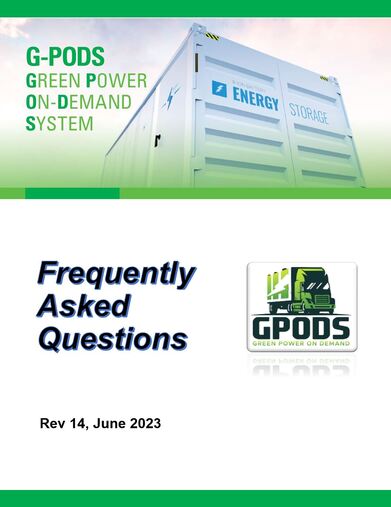New Project Awarded Under the FEMA BRIC Grant Program for FY2021
Frederick, Maryland – April 17, 2023
The Virginia Department of Emergency Management (VDEM) recently announced that it was awarded a federal grant to proceed with a planning and scoping project that will investigate the potential use of mobile energy storage systems to provide backup power to support critical infrastructure in rural, Tribal or disadvantaged communities during natural disasters or other catastrophic events.
This project was awarded under the Federal Emergency Management Agency (FEMA) Building Resilient Infrastructure & Communities (BRIC) grant program for FY2021.
The scoping project is a jointly developed infrastructure mitigation effort conducted by VDEM, Dominion Energy Virginia, the All Hazards Consortium (501c3), and multiple partners and national trade associations.
This scoping project will support the proposal to use energy storage technologies to leverage a mobile battery system, referred to as the Green Power On-Demand System (GPODS), to support the community’s electric grid during normal conditions but could also be deployed to predetermined locations to provide backup power during a natural disaster or other catastrophic event.
This new energy storage capability can help multiple rural, Tribal, or disadvantaged communities to better cope with, and recover faster from, power outages by ensuring that the essential infrastructure services, such as water, communications, transportation, fuel, etc. and community services, such as shelters, feeding/warming/cooling stations, healthcare, transportation, public safety, etc. can continue to operate during a disaster.
This will help reduce or eliminate hardships and suffering during a catastrophic incident for residents while reducing economic losses for businesses that provide jobs and goods/services to the communities.
The GPODS system will be governed by the state/local emergency managers and owned, operated, maintained, and managed by - Dominion Energy Virginia.
The Virginia Department of Emergency Management (VDEM) recently announced that it was awarded a federal grant to proceed with a planning and scoping project that will investigate the potential use of mobile energy storage systems to provide backup power to support critical infrastructure in rural, Tribal or disadvantaged communities during natural disasters or other catastrophic events.
This project was awarded under the Federal Emergency Management Agency (FEMA) Building Resilient Infrastructure & Communities (BRIC) grant program for FY2021.
The scoping project is a jointly developed infrastructure mitigation effort conducted by VDEM, Dominion Energy Virginia, the All Hazards Consortium (501c3), and multiple partners and national trade associations.
This scoping project will support the proposal to use energy storage technologies to leverage a mobile battery system, referred to as the Green Power On-Demand System (GPODS), to support the community’s electric grid during normal conditions but could also be deployed to predetermined locations to provide backup power during a natural disaster or other catastrophic event.
This new energy storage capability can help multiple rural, Tribal, or disadvantaged communities to better cope with, and recover faster from, power outages by ensuring that the essential infrastructure services, such as water, communications, transportation, fuel, etc. and community services, such as shelters, feeding/warming/cooling stations, healthcare, transportation, public safety, etc. can continue to operate during a disaster.
This will help reduce or eliminate hardships and suffering during a catastrophic incident for residents while reducing economic losses for businesses that provide jobs and goods/services to the communities.
The GPODS system will be governed by the state/local emergency managers and owned, operated, maintained, and managed by - Dominion Energy Virginia.
OVERVIEW
Project Overview
Background
Challenges
A New Solution
Benefits of GPODS
- Natural disasters (hurricanes, wildfires, floods, wind/ice/snowstorms, etc.) cause electric power outages that many times can last several days or more.
- Power outages many times have cascading impacts on communities that disrupt their infrastructure (e.g., water, transportation, communications, fuel, etc.) and restrict access to essential services (e.g., sheltering/food, warming/cooling stations, public safety/security, health/medical, etc..).
- This lack of power is particularly acute in under-served or disadvantaged communities, which depend more on state and local government services.
- The FEMA Building Resilient Infrastructure and Communities Grant (BRIC) was created to support states, local communities, tribes, and territories undertaking hazard mitigation projects, reducing the risks they face from disasters and natural hazards.
- The BRIC program guiding principles are supporting communities through capability- and capacity-building; encouraging and enabling innovation; promoting partnerships; enabling large projects; maintaining flexibility; and providing consistency.
Challenges
- Many states do not have the available resources to participate in the FEMA BRIC grant program and meet its quantitative and qualitative requirements particularly for infrastructure projects with industry.
- Most rural, tribal, and disadvantaged communities don’t have the available resources (people, expertise, partnerships, etc..) to submit BRIC grant project applications which can take 12-18 months to develop.
- Large-scale infrastructure-focused mitigation projects require industry participation and investments along with the technical, engineering, operational, legal, and regulatory resources that are very difficult to coordinate.
A New Solution
- The GPODS (Green Power On-Demand System) system leverages mobile energy storage technologies to power “pre-wired” facilities or infrastructure while the electric grid power is disrupted.
- The GPODS system is governed by the state/local government and owned, operated, maintained, and managed by the utility.
- The GPODS system provides a dual-use capability all year round: it supports the community’s electric grid during normal days and provides backup power during disasters.
- The GPODS create a network of “pre-wired” locations that can accept a GPODS unit.
Benefits of GPODS
- Reduces the impacts of electric power outages and cascading impacts caused by storms, floods, etc.
- Increases community’s access to schools, shelters/feeding, water, communications, transportation, and public safety/health services during disasters.
- Mobile battery units are scalable and can be deployed to address small and large applications without geographic limitations.
- The GPODS project develops the FEMA BCA (Business Costs Analysis) with the state and leverages a cross-sector approach to meet or exceed FEMA BCA requirements.
- The GPODS project partners provide all initial grant application resources to the state at no cost.
EDUCATION
|
GOVERNMENT PERSPECTIVES ON GPODS PROJECT
This virtual meeting focused on a briefing from Virginia Department of Emergency Management (VDEM) on the GPODS project from the state/local government perspective. In This Video... Min 0:00: Background Min 1:47: Why was this project of interest to VDEM? Min 3:00: Challenges states face with FEMA BRIC program Min 4:30: The FEMA Benefits Cost Analysis (BCA) Challenge Min 6:05: Overcoming limited resources w/partnerships Min 8:10: Picking local communities and sites for a pilot Min 11:04: Organizing VDEM internally to support the effort Min 13:57: Internal obstacles, optics or hurdles Min 16:18: How the project will help disadvantaged communities Min 20:24: Ancillary community benefits of the project Min 22:20: Where is this capability going in the future? |
|
|
TECHNICAL OVERVIEW OF GPODS PROJECT
A technical overview of the GPODS project with the Virginia Department of Emergency Management (VDEM) and Dominion Energy In This Video... Min 1:00: Agenda Min 2:00: Definitions and components Min 4:30: Why energy storage is important to utilities Min 10:00: Dominion energy storage goals Min 19:12: The GPODS Project Min 26:51: Challenges Min 28:36: Safety Min 29:35: The next 5 years |
|
|
PANEL DISCUSSION ON GPODS PROJECT
This virtual panel discussed the GPODS (Green Power On-Demand System) project in Virginia with Dominion Energy. The project involves a leveraging of energy storage technology to create more resilient communities and power infrastructure to serve water, health, public safety, shelter/feeding and dialysis facilities in several disadvantaged communities under the FEMA BRIC (Building Resilient Infrastructure and Communities) grant program. In This Video... Min 0:40: Overview Min 3:30: Why is this project important disadvantaged communities Min 6:50: How local emergency managers will leverage this project Min 10:00: Overcoming government's limited resources Min 11:06: How the technology works and benefits communities Min 15:09: How industry partnerships increased resources Min 18:50: Working With private sector facility owners Min 21:30: How was the utility's partnership with state/local government? Min 23:00: Meeting FEMA's BRIC grant requirements Min 26:01: Impacts on water/wastewater infrastructure Min 30:34: Impacts on energy storage capacity Min 33:35: Impacts of just 24 hrs of power being on after an outage Min 36:40 Questions and Answers Min 38:49: Mutual assistance to share across state lines |
|
FREQUENTLY ASKED QUESTIONS
|
Download the current version of the Frequently Asked Questions (FAQs) document below:
| |||||||


